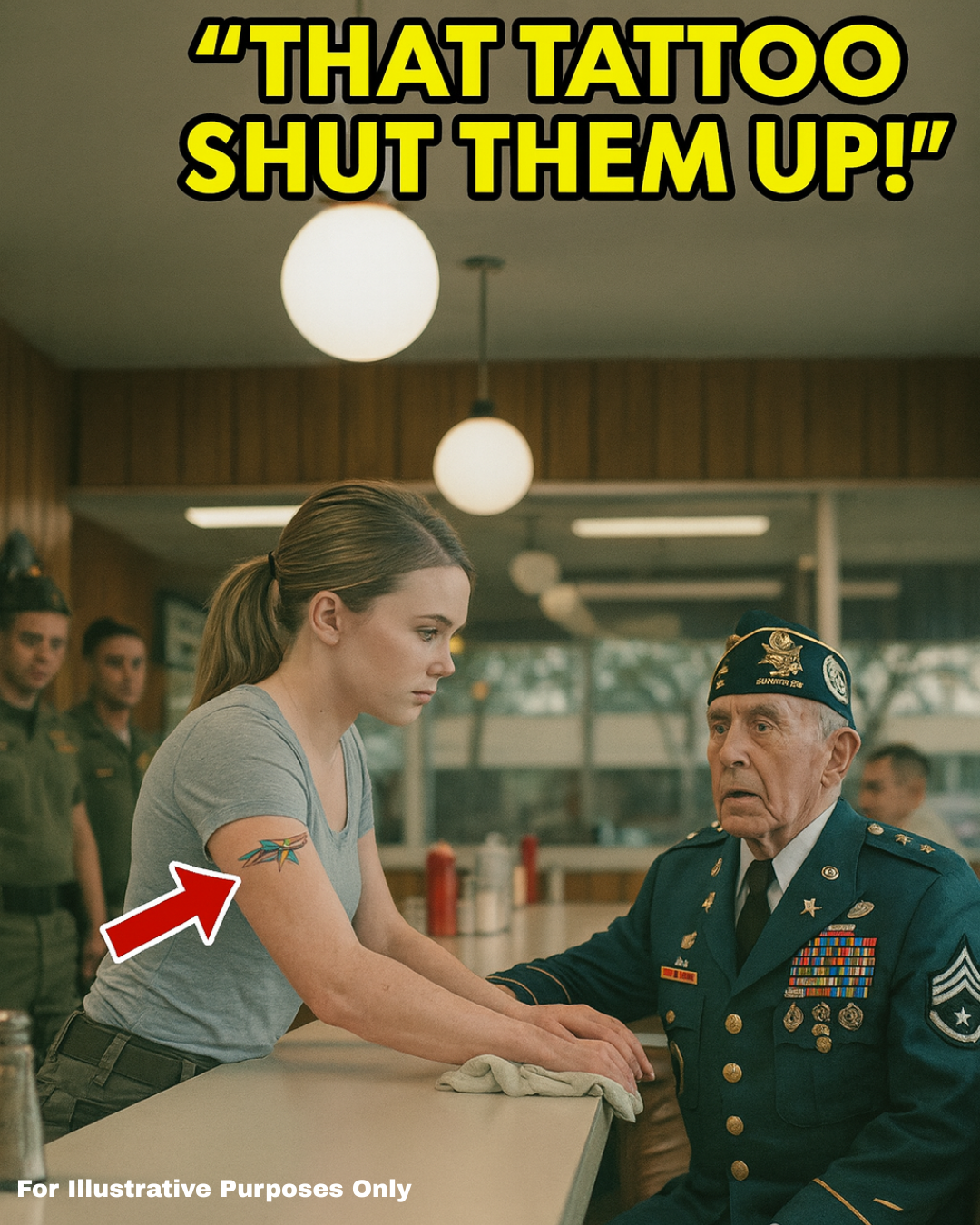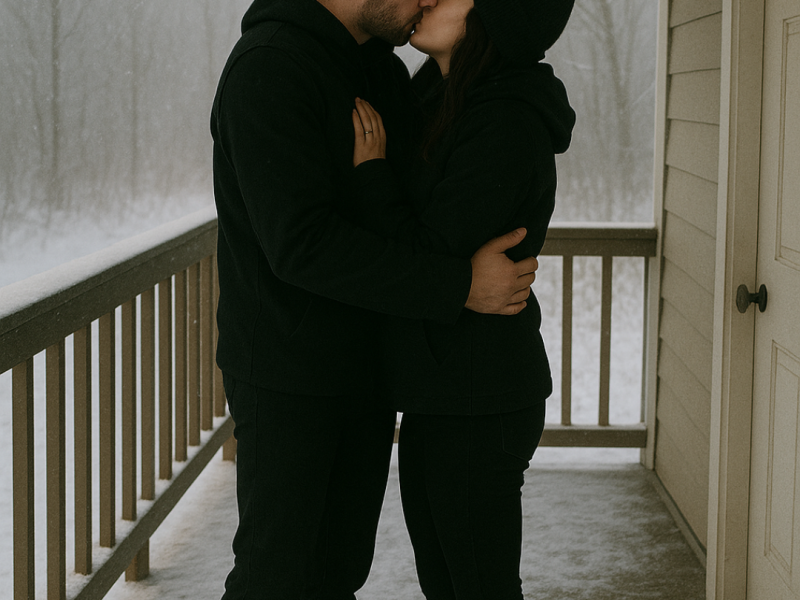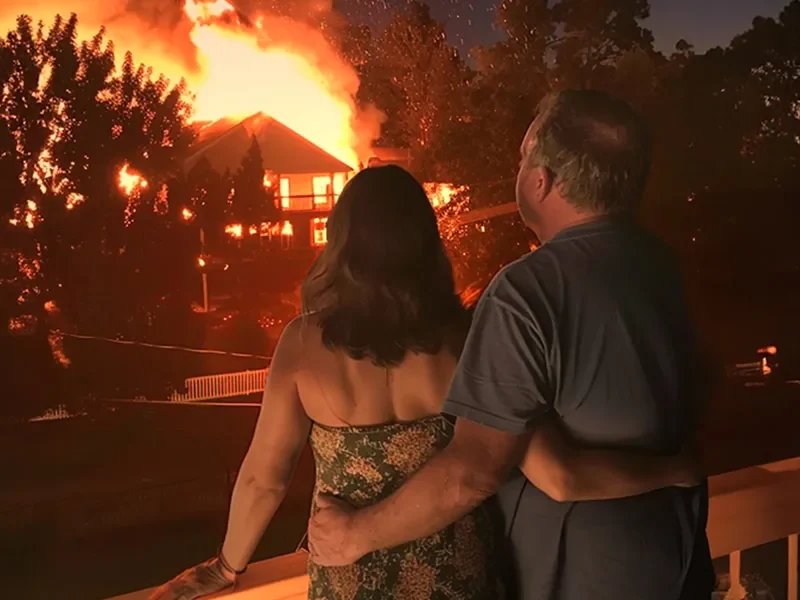A Simple Woman Is Laughed At for Her Scars — Until a Veteran Freezes at Her Unit Tattoo
In a quiet roadside diner, where the scent of fried eggs and coffee lingers in the air, an ordinary scene unfolded that would soon become unforgettable. A young woman, wearing a plain gray T-shirt and combat-style pants, walked in and took a seat at the counter. Her arms bore the deep marks of experience — visible scars that made heads turn. Some eyes lingered in judgment. Others whispered. But none truly knew the story behind those scars… until a veteran sitting nearby noticed a small yet powerful detail: her tattoo.
The Woman with Scars
The woman appeared to be in her mid-twenties. She didn’t speak loudly or demand attention. Her posture was strong, yet calm — the kind of strength you don’t brag about. But what many noticed first weren’t her eyes or her presence. It was the collection of scars along her arm, ranging from deep tissue burns to what looked like shrapnel wounds.
Two men in military-style uniforms at a back booth exchanged glances. One smirked. The other shook his head. The woman noticed but didn’t flinch. She had likely seen much worse.
She calmly reached across the counter to grab a napkin, and that’s when the tattoo on her arm became visible — a subtle but distinct military insignia. At first glance, it might seem decorative. But to those who know, it spoke volumes.
An Unexpected Reaction
Seated at the end of the diner was an elderly man dressed in full military dress uniform. His chest gleamed with medals — badges of honor, bravery, and years of sacrifice. He’d been coming to this diner for decades. Everyone knew him as Sergeant Major Thomas Reeve, a retired veteran of three wars and a recipient of the Silver Star.
He hadn’t paid the young woman much attention — until he caught sight of her tattoo.
His fork froze in mid-air. His back straightened. His eyes locked on the emblem inked on her skin.
It was not just any tattoo. It was the insignia of the 807th Tactical Evacuation Unit — a rare, elite medical rescue team that operated in high-risk zones overseas. A unit known for parachuting into war zones, rescuing the injured under fire, and often suffering the highest casualty rates among non-combat roles.
The old man stood up slowly and made his way to her. The diner fell into a hush. The woman looked up.
“You were with the 807th?” he asked, his voice wavering slightly.
She nodded quietly. “Afghanistan. 2017. Helmand Province.”
His eyes welled up.
“My son served with them,” he said, voice cracking. “He didn’t come back.”
For a moment, the room held its breath.
The woman reached out, placing her hand over his. “I remember him. He was brave. Saved my life.”
Tears fell freely down the veteran’s face.
The Power of Silent Stories
People around them suddenly saw the woman differently. The scars, once viewed with curiosity or distaste, were now symbols of service, sacrifice, and unimaginable strength. Those who had quietly judged her were now ashamed of their whispers.
One of the men who had laughed earlier stood up and saluted her. She didn’t return the gesture — not out of disrespect, but out of humility. That moment wasn’t about recognition. It was about connection. Two people from different generations, bonded by shared pain, duty, and honor.
It wasn’t long before the diner’s mood shifted completely. Conversations turned solemn. Respect filled the air. And people began approaching her — not out of pity, but with gratitude.
Why Judging by Appearance Is Always a Mistake
This story is a reminder of how little we often know about the people we meet. The woman had done nothing to attract attention. Her scars weren’t invitations for ridicule, and her silence wasn’t weakness. In fact, her quiet demeanor and simple appearance hid a life filled with incredible courage.
Every scar had a story — maybe a rescue gone wrong, a last-minute dash through enemy fire, a fallen comrade whose memory still lingered. And that tattoo wasn’t just ink; it was a memorial, a badge of honor, and a symbol of all she had endured and survived.
Heroes Don’t Always Wear Capes — Sometimes They Wear Scars
Today, we often associate heroism with grand acts — soldiers in parades, firefighters in uniforms, leaders giving speeches. But true heroes are often the ones who live in silence, carry their wounds inside and out, and never ask for applause.
This woman — scarred, quiet, and judged — had already saved lives, carried pain no one could see, and kept moving forward.
And that’s what true strength looks like.
Final Reflection: A Veteran’s Salute
As the elderly veteran prepared to leave the diner, he turned back to the young woman.
“You may not wear that uniform anymore,” he said, “but you’re more soldier than most ever will be.”
He offered a final salute.
This time, she returned it.
And for everyone watching, that simple gesture held more meaning than any medal, speech, or uniform ever could.


